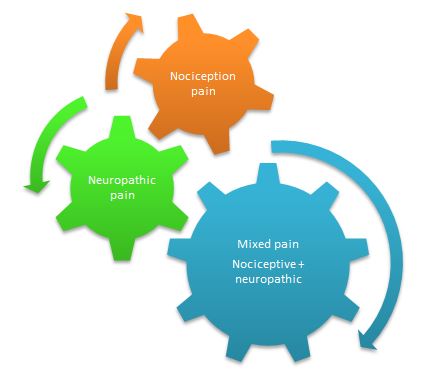Week 5: Pain medications
Painkillers are possibly a treatment option for most people expect to get relief from pain. Often pain killers may not work for persistent pain and it may arise from several different mechanisms. There are 2 types of pain known as nociceptive and neuropathic pain. Pain is produced through different pathways in our nervous system and they need different types of medications. This is similar to road lanes in the picture below e.g. slow, fast, cycle and bus lanes.

Considering the different pathways involved in pain production
- They need different types of medication - to work at different speeds, tissues and parts of the brain
- Some work in small doses and act faster e.g. fentanyl – imagine a motorbike
- Some work in larger doses but act slower – e.g. gabapentin – imagine a tractor
What are the medication options?
Below are the types of medications you may have tried.
- Non-steroidal anti-inflammatory medications: Aspirin, ibuprofen, diclofenac, naproxen and celecoxib
- Weak opioids: Codeine, dihydrocodeine and tramadol
- Strong Opioids: Morphine, oxycodone, fentanyl, buprenorphine
- Combination painkillers: co-codamol (paracetamol and codeine), co-dydramol (paracetamol and dihydrocodeine), tramacet (Paracetamol and tramadol)
There are some non-standard medications used for pain arising out of nerve irritation or sensitised nerves. They are
- Anti-depressants: Amitriptyline, nortriptyline and duloxetine
- Anti-epileptics: Gabapentin, pregabalin
WHO pain ladder
Neuropathic medication: 2 types
1. Anti-depressants e.g. Amitriptyline, Nortriptyline and Duloxetine
- This increases chemicals in the CNS that reduce pain signals
- Takes time to work – may feel some relief after a week or so, but maximum relief takes several weeks
- Dose is increased gradually to minimise side effects.
- Doses are lower than used for depression
- Never stop abruptly as may have withdrawal effects
- Common side effects are nausea vomiting, dry mouth, constipation
2. Anti-convulsants e.g. pregabalin and gabapentin
- This medication calm the nerves through reducing pain signals sent from damaged nerves (e.g. neuropathy) or overly sensitized nerves (e.g. fibromyalgia)
- Takes time to work
- Dose is increased gradually to minimise side effects
- Never stop abruptly as may cause withdrawal effects
- Common side effects are dizziness ,drowsiness
Common Side Effects
- Constipation – increase fluid fibre intake, consider lactulose senna, movicol
- Dry Mouth – boiled sweets, artificial saliva
- Nausea /vomiting – anti-emetic cover when starting new medication, usually settle may need to adjust dose
- Sleepiness – Adjust time of dosage e.g. amitriptyline – take the dose earlier
Managing side effects
- Most likely to occur when starting or changing medication
- May go away as your body adjusts to the medication
- If side effects outweigh benefit of medication then will require reviewing
It is important to remember
- Each type of medication works on different aspects of pain
- Dosage of medication varies between individuals
- Mix of medication may be needed to address persistent pain
- Remember side effects are common with medication
- Understanding why and when side effects occur may help to manage them
- Don’t expect to get zero pain
- Most pain medication only reduces the pain by 20-30%
NOTE: Always discuss with your doctor or consultant before making any changes to your medication use.
|
Download: |





